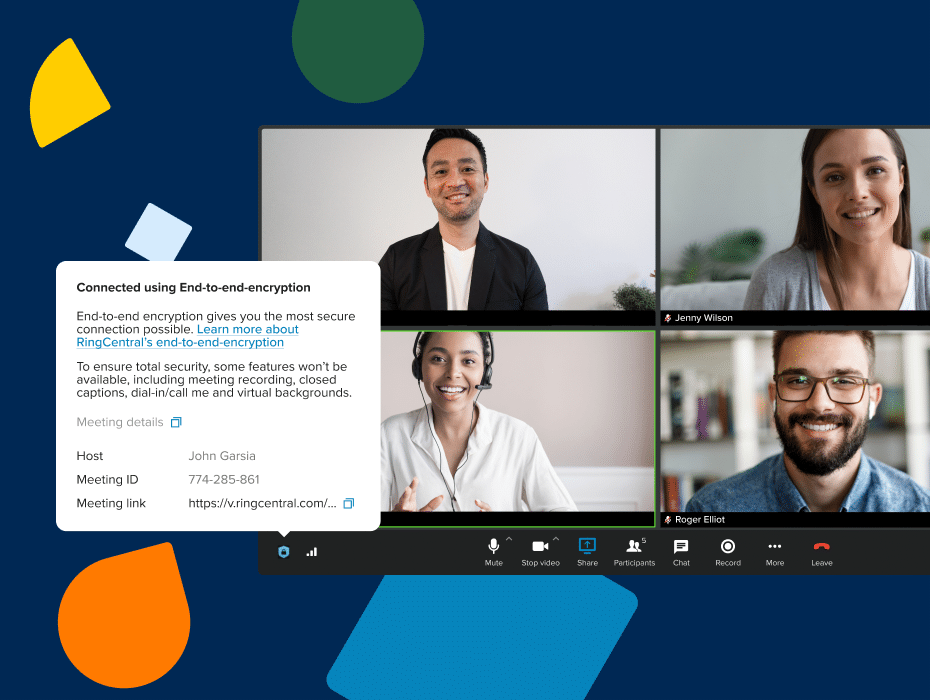Highlights:
- Both leaders and employees want to adopt a hybrid work approach, but companies have a challenge: keeping teams connected.
- People will work from anywhere and everywhere, with differing schedules and distributed teams.
- RingCentral MVP allows people to work their way. On any device, using any mode (message, video, phone), and at anytime from anywhere.
When we embarked on our work-from-home journeys 1.5 years ago, no one expected us to get this far. After all, our massive remote work experiment was only intended to last a few months.
Yet here we are, crushing the proverbial rules of work with a newfound appreciation for our new lives. We toppled our old, rigid routines and demonstrated how agile we can really be. And we’re thriving in it: 83% of employers say that remote work was an overwhelming success.

What comes next, however, is a challenge all companies have to face. Where do we go from here? On one hand, leaders want employees to return to the office. On the other, employees want to stay remote, and many are ready to change jobs if they’re forced back.
The answer seems straightforward: companies adopt a hybrid work approach where employees spend several days in the office and several at home. It’s a popular idea, too. More than 50% of employees want to work from home at least three days a week.
But it’s not so simple. After working from home for over a year, many teams have lost one of the most important elements to collaboration: human connections. Teams can’t work together without it, and companies that don’t support it can easily fall behind.
So what do companies do?
In a hybrid world, it’s easy to lose sight of human connections
Working in the office gives us the opportunity to experience the most intimate parts of organizational culture. Visiting colleagues at their desks, exchanging ideas in a meeting room, having casual chats with acquaintances you’ve never worked with before.
Working from home—while undeniably productive and successful—doesn’t offer those same intimacies. Many workers lost connections with teammates outside of their immediate circles. Many became more siloed, working alone and out of sight of their teams.

As it turns out, seeing teammates regularly behind a laptop screen isn’t as eventful as meeting together in-person.
And in a hybrid environment—where employees will zip in and out of offices at any time—restoring and maintaining those relationships won’t be easy. Companies will have to contend with alternating schedules, distributed teams, and two-tier systems where employees in the office have a greater influence on decision-making than those at home.
If there’s one clear lesson we can learn from this, it’s that keeping teams connected is more important than ever. The question is: how?
People want the freedom to work their way
Hybrid work will look vastly different from both in-office and remote work. In fact, it requires that we completely rethink how we work. For example, hours logged has long been the herald of a productive employee. But in a hybrid workplace, outcomes and impact are the best indicators of success.
And in order to help teams stay connected, leaders will have to first understand how people want to work in a hybrid environment.
In a hybrid workplace, workers expect to:
- Work from anywhere and everywhere: in the office, from home, on the go.
- Work from their computers and smartphones.
- Use all forms of communication, including messaging, video, and phone.
- Collaborate via scheduled, spontaneous, and ongoing meetings.
Let’s break this down a bit. Tomorrow’s workers will most likely split their time between the office and home—or work for prolonged periods in both. Coupled with the rise of permanent remote employees post-pandemic, teams can truly be anywhere and everywhere.
Their devices will be key to how they work together from anywhere. These days, it’s not enough to carry just a laptop home or to the office. Smartphones can perform many of the tasks computers can, and employees will want the freedom to use them for work.

And they’ll need their communications wherever they go. If the pandemic has taught us anything, it’s that employees use all forms of communication to stay connected—whether that’s team messaging, video conferencing, or phone calls. The hybrid workplace will need this too.
They’ll also want to collaborate at any moment. Scheduled and ongoing meetings such as project checkups are expected and necessary. However, when workers need to get a quick answer, they’ll want the ability to start a meeting spontaneously.
All of these qualities are easy to achieve when people work together in the office. But in a hybrid setting, people will need the help of their tools to keep them connected and productive.
How RingCentral MVP keeps people together
In a nutshell, hybrid workers want the freedom to work their way.
If they’re on the road, they want to use the apps on their smartphones to send messages and make calls. If they’re at home, they want to make video calls from their computers. If they’re in the office moving between meetings, they want to switch between their computers and smartphones interchangeably.
Here’s how RingCentral MVP makes those possible:
1. Work from any device
Like most of our tools these days, unified communications lives in the cloud. Any employee can access their communications by simply signing in from their desktop app, smartphone app, or web app. All they need is an internet connection.
The rise of Bring Your Own Device (BYOD) in the past year means that just about every worker has multiple ways to connect. Whether it’s an employee’s personal smartphone or a company-provided one, they can send messages, make phone calls, and do almost anything the desktop app can.
2. Use any form of communication
Workers want flexibility in how they communicate and collaborate. For example, if a worker needs to discuss the progress of a project, they can send a message directly to their teammate. If that discussion requires a deeper conversation, they can then start a video meeting with a single click.
That’s because RingCentral MVP combines messaging, video, and phone together. Users never have to switch apps just to switch their communication of choice. Every bit of context—from group messages to shared files and links—all stay in the same app. And when users want to make a call or start a video call, they can do it all in RingCentral.
3. Keeping it all together
With message, video, and phone features available to both smartphones and laptops, workers can truly work together from anywhere. They can fluidly move between devices and locations without ever sacrificing their ability to connect.
And keeping it all in one app eliminates the need for employees to constantly switch apps just to initiate a phone call or video meeting. This helps prevent app overload, or the bombardment of distractions that come from having too many tools.
Building human connections is the future of work
Succeeding in hybrid work won’t happen overnight, and will take much more than technology changes to make it work. But with the right tools to enable your people to work their way, they’ll have everything they need to stay connected and productive—wherever they are.
And RingCentral MVP is more than just message, video, phone. It’s the culmination of every feature under those building blocks.
Here are just a few features to check out:
- Introducing a new wave of innovations to supercharge global hybrid teams
- Call Flip: Switch from your PC to mobile (and vice versa) with a single click
- New participant pinning, meeting room features, and more now available
- The RingCentral progressive web application: Integrated with your favorite Google tools
In the following blogs, we’ll break down how every mode of communication (message, video, phone) helps break down communication barriers and empowers human connections.
Updated Jul 25, 2024











